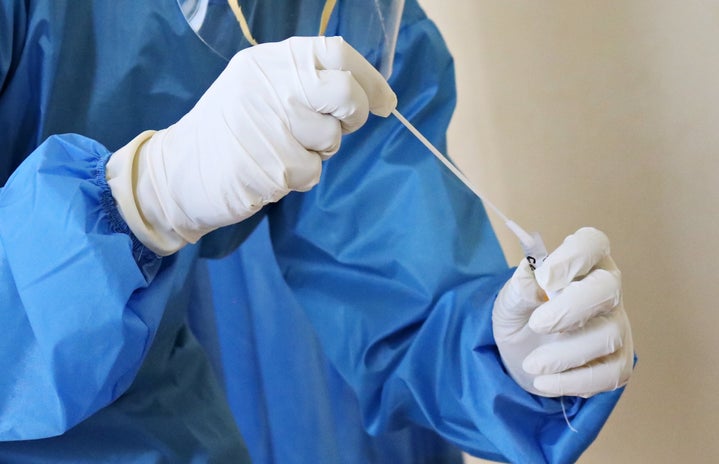The U.S. recently surpassed 400,000 COVID-19 deaths, nearly one year after the first COVID-19 case was confirmed in the country. Among the 400,000 deaths, racial and ethnic minorities unequally make up much of them, and this is no coincidence. While some are aware of the health disparities among ethnic and racial minorities in the United States, the pandemic has largely revealed and even exacerbated the inequities to levels that are too large to ignore. According to the CDC, the rate ratios of COVID-19 deaths compared to white, non-Hispanic persons are 2.6 times more for American Indigenous people, 1.1 times more for Asians, 2.8 times more for Black or African American people and 2.8 times more for Latino or Hispanic people.
Certain conditions in the places where people live, learn, work and play can contribute to a variety of health risks and outcomes—these conditions are known as the social determinants of health. Long-standing inequities in social determinants of health can affect these groups, such as healthcare access and poverty. There are five general areas of social determinants of health: physical environment, health and healthcare, occupation and job conditions, income and education.
Generally, people from racial and ethnic minority groups are disproportionately affected when it comes to finding affordable and quality housing. This limits their options to residences that may be crowded, lack reliable transportation, are susceptible to environmental pollution and are limited in access to healthy and affordable foods. Collectively, these factors may make illnesses, diseases and injuries more common and more severe, when experienced.
Additionally, racial and ethnic minorities may lack access to quality healthcare, health insurance or linguistically and culturally responsive healthcare. Inequities in treatment may lead to a distrust of government and healthcare systems. This increases the risks of poor health and health outcomes by limiting health promotion, disease and injury prevention and condition management activities.
A relevant example of this occurring is the distrust Black Americans have of the new COVID-19 vaccines, mistrust that is fueled by their long history of medical (and general) mistreatment. For the United States to turn the tide of the pandemic and reach herd immunity, there will need to be a near-universal willingness among Americans to be vaccinated. This may not be attainable if Black Americans largely refuse to be vaccinated. According to a poll by the Kaiser Family Foundation and The Undefeated, some 70% of Black Americans believe that people are being treated unfairly based on race and ethnicity when they seek medical care. This feeling of unequal access to care is intensified by the pandemic, which is currently disproportionately taking Black lives both physically and economically. Additionally, the circumstances of the coronavirus pandemic called for the need for a quicker than usual development process for a vaccine, which fostered misconceptions among Black Americans that corners are being cut. Normally, the process of developing and distributing a vaccine takes years. For the COVID-19 vaccine to be made and given out in a matter of less than a year can be alarming for communities of color.
Racial and ethnic minorities are disproportionately represented in essential work settings such as healthcare facilities, farms, factories, food production and processing, grocery stores and public transportation. Workers at these settings are more at risk of contracting COVID-19 since these jobs require frequent or close contact with the public and other workers. Additionally, many of these jobs cannot be done from home nor do they have many benefits such as paid sick days. This ties in with income and wealth, one of the social determinants of health. Racial and ethnic minorities generally have lower incomes and may experience more barriers to wealth accumulation than their white counterparts. This raises challenges in managing expenses, paying medical bills, and accessing affordable quality housing, nutritious food and reliable childcare.
Lastly, inequities in access to high-quality education can lead to lower literacy and numeracy levels, lower high school completion rates and barriers to college entrance for minorities. This may affect one’s access to quality job training or programs tailored to the language needs of racial and ethnic minority groups, thus limiting future options and leading to lower-paying or less stable jobs.
Altogether, these factors may increase the risk of COVID-19 exposure, illness, hospitalization, long-term health and social consequences and death. This is evident among our racial and ethnic minorities who are largely suffering more from the pandemic than their white counterparts. Therefore, this calls for an urgent need to move towards health equity such that not only the country can overcome this pandemic but to also prevent future ones.
Resources such as easy access to information, goods and services, affordable COVID-19 testing and medical and mental healthcare that are all tailored to meet the needs of people from diverse backgrounds are necessary. Only when these needs are met can we reach our goal of a healthier America that doesn’t exclude our racial and ethnic minorities.


